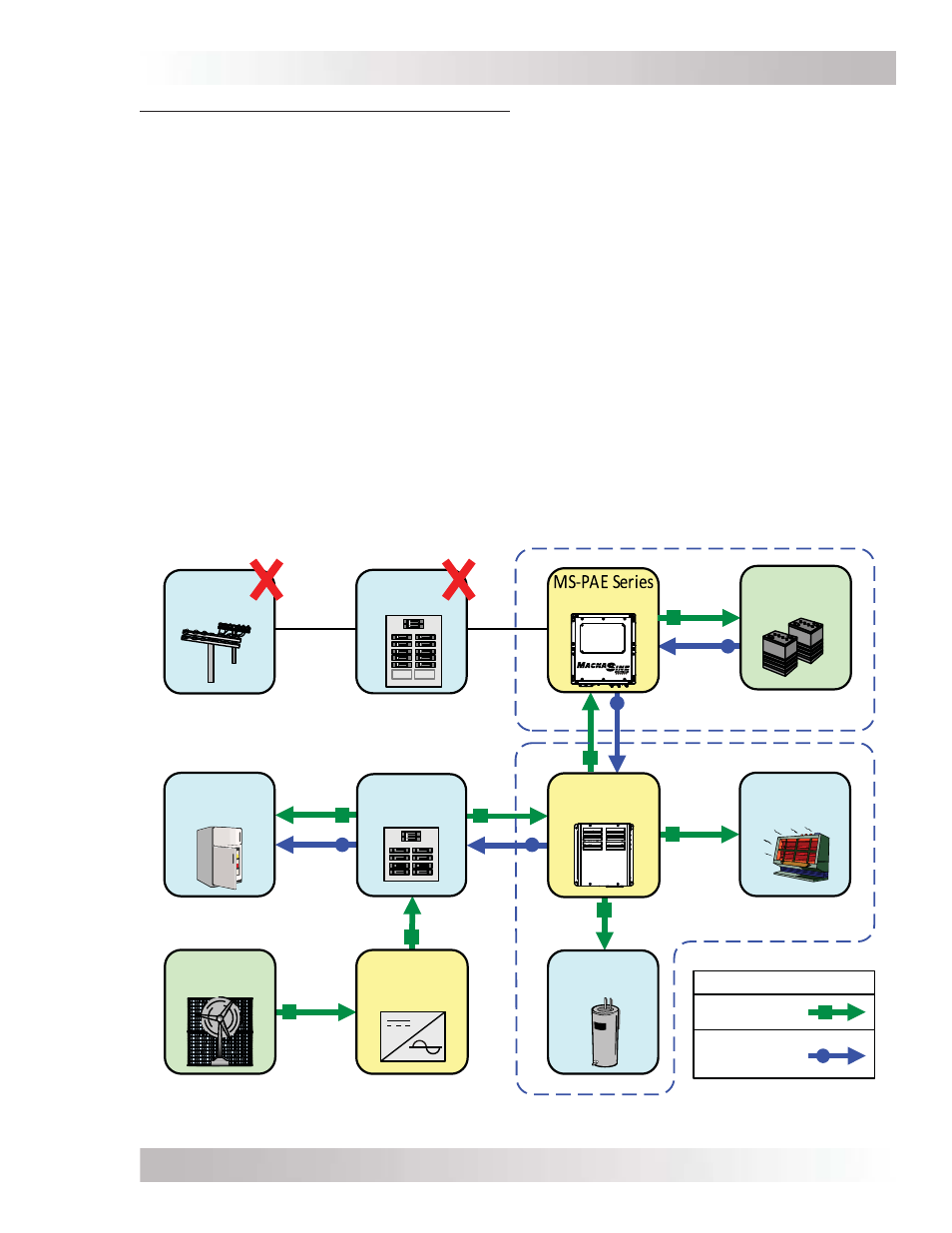Grid-tie inverter, Acld-40 controller – Magnum Energy AC Load Diversion Controller (ACLD-40) User Manual
Page 10

Page 3
©
2015 Sensata Technologies
Introduction
During a utility power outage (see Figure 1-2): When the utility power fails, the grid-tie inverter
disconnects (preventing the use of the renewable energy) and the MS-PAE Series inverter
automatically starts powering the critical loads. However, because the output of the MS-PAE
Series inverter is connected to the same AC bus as the grid-tie inverter and its output waveform
is compatible to the utility’s waveform, the grid-tie inverter re-synchronizes to the AC output
waveform of the MS-PAE Series inverter. After a minimum 5-minute disconnect period, the grid-
tie inverter reconnects and starts inverting all the energy from the renewable energy source just
like it did when it was connected to utility power.
The grid-tie inverter—now reconnected using the AC output waveform of the MS-PAE Series
inverter—converts as much of the available renewable energy as possible. However, during a
utility power interruption, the main panel loads are no longer connected and the utility grid is not
available to export any excess power that is generated. This means there may be more power on
the AC bus than the critical loads can consume, causing current to be pushed back thru the AC
output of the MS-PAE Series inverter into the battery bank. Since this is not the normal path for
the MS-PAE Series inverter to sense incoming current, it is not able to control the battery voltage
(or regulate the current, which requires the inverter to be rated to handle the full power output
of the renewable energy source). If the renewable energy provides more current that the critical
loads can use, there is the possibility that the battery voltage will rise and cause damage to the
battery. If the battery voltage is allowed to rise high enough, a High Battery Voltage fault on
the MS-PAE Series inverter will occur, causing it to turn off; which in turn shuts down the entire
system (i.e., critical loads and grid-tie inverter turn off). To prevent this from happening, there
must be a method of regulating the battery bank and ensuring it is properly charged; this is why
the ACLD-40 is needed.
Figure 1-2, ACLD Active (Utility Power NOT Available)
Battery Back-up Section
AC Load
(Primary)
ACLD Section
Main
Panel
Utility
Grid
Inverter
Battery
Bank
Grid-Tie
Inverter
Critical
Loads
Sub-
Panel
ACLD-40
Controller
Renewable
Energy
Power Flow
Renewable
Energy (RE)
Inverter power
(when RE not
available)
AC Load
(Secondary)
